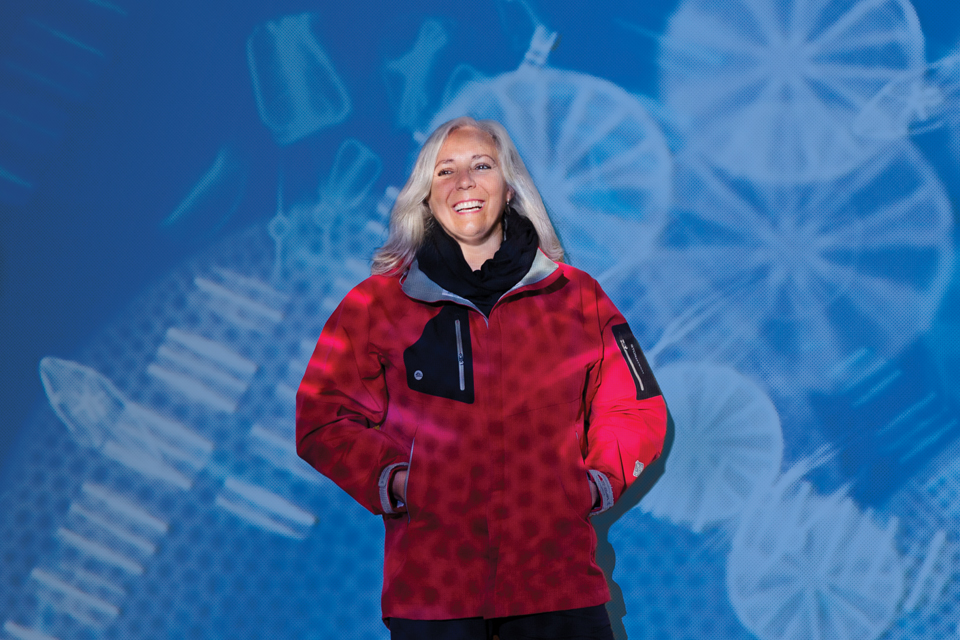Tiny life forms, big impact
- Vimala Jeevanandam

Understanding how phytoplankton interact with the environment is critical to explaining and predicting global ocean change
Every spring, as the rest of us are admiring the daffodils, Dr. Diana Varela has her eye on a different type of bloom. The University of Victoria biological oceanographer is studying the marine diatoms of Saanich Inlet, just north of campus. As the days lengthen and the sun gets brighter, nourished with the abundant nutrients that have built up over the past winter, the diatoms burst into algal blooms.
These unicellular lifeforms are the crux of ecosystems both aquatic and terrestrial. Part of a larger group of microscopic algae known as phytoplankton, diatoms drift across the top layer of oceans, seas and lakes.
Phytoplankton as a whole produce about half of Earth’s oxygen, cycle elements such as carbon, silicon and nitrogen throughout the ocean, all while providing a primary food source for marine animals. And like plants, phytoplankton trap atmospheric carbon dioxide, making them a powerful influence in global climate change.
“Because they’re microscopic and rarely seen with the naked eye, it’s easy to overlook phytoplankton. But they’re fundamental to so much of life,” says Varela, who is a scientist and professor in UVic’s Department of Biology and School of Earth and Ocean Sciences.
Understanding what influences phytoplankton and, in turn, their impact on its environment, is essential to understanding the planet as a whole.
—Dr. Diana Varela, professor
This has been the focus of her research for the past 20 years, where she couples field studies with laboratory work. In her search to clarify the complex relationship between phytoplankton and their environment, she’s gone on expeditions to some of the planet’s most extreme climates—from the Arctic Ocean to Antarctic marine waters.
There she's examined the dramatic seasonal effects of polar conditions, as well as the burgeoning impact of climate and habitat change on the productivity of sensitive planktonic communities.
Closer to home, Varela has been examining the role of diatoms in Saanich Inlet. Each year, after the diatoms bloom, they die off in huge numbers as part of their bloom-and-bust cycle. As they die, they fall to the inlet’s ocean floor. Here, in the depths of the inlet, the intensity of the diatom seasonal die-off causes low oxygen levels, creating a natural seasonal dead zone.
“The inlet is a unique habitat—dynamic and with constantly changing conditions,” says Varela. The variations it experiences over a year make it an excellent place to study the role of diatoms on carbon capture, oxygen content and the overall ecosystem, using the abundant nutrients in seawater that had built up over the winter.
As the global climate changes, we’re seeing an increase in the number and size of low or no-oxygen areas, dramatic increases in phytoplankton productivity in some regions, and a decrease in others. The information that Varela’s team gathers on phytoplankton processes can be extrapolated to explain and predict changes that are happening in marine ecosystems throughout the world.
Phytoplankton can help us better understand the present and future, but they also help us look deep into the past. Diatoms are known for their distinctive symmetrical shapes and beautifully intricate cell walls made of silica—a form of natural glass that can remain at the bottom of the ocean for millions of years.
“When we understand how diatoms change their makeup under different nutrient and other environmental conditions,” says Varela, “we can build a map that can be used to discover a historic record of ocean conditions.”

